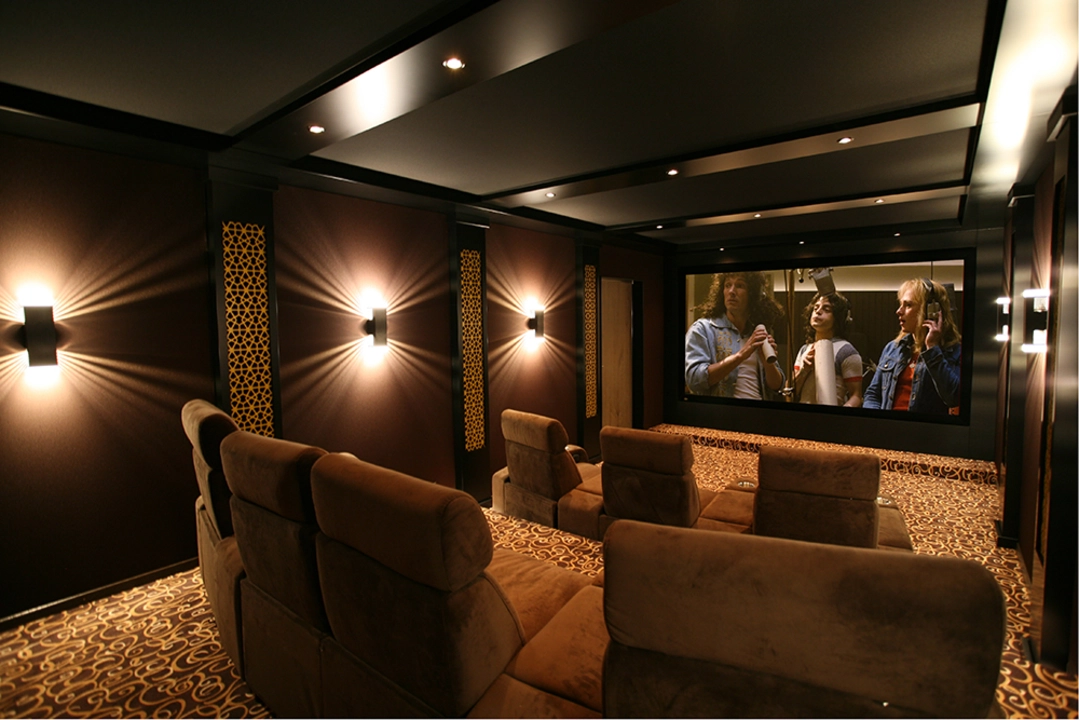Introduction: The Magic of Cinema
Ever since the invention of cinema, it has been a magical and captivating medium that has entertained and educated people all around the world. The big screen, surround sound, and the dim lighting create an immersive experience that takes us on a journey into different worlds and stories. One of the key aspects of the cinematic experience is the screen. When we walk into a movie theater, we notice that the screen is not flat, but rather in a concave position. Why is this, you might ask? In this article, we will explore the reasons behind this design choice and the benefits it brings to our viewing experience.
The Science Behind the Concave Screen
Before diving into the specific reasons for a concave screen, it's important to understand the science behind it. The human eye perceives images on a curved surface better than on a flat one. This is because our eyes are naturally curved, and we see the world in a slightly curved manner. This curvature helps reduce distortion and create a more accurate representation of the world around us. The same principle applies to cinema screens. By curving the screen, it provides a more immersive and accurate visual experience for the audience.
Reducing Distortion and Enhancing Image Quality
One of the primary reasons for the concave screen design is to reduce distortion. On a flat screen, images can appear stretched and distorted towards the edges, which can be distracting and lessen the quality of the film. A concave screen, on the other hand, helps to correct this distortion by curving the image towards the viewer. This results in a more accurate and visually appealing image, enhancing the overall experience.
Creating a More Immersive Experience
Another major advantage of a concave screen is that it provides a more immersive experience for the viewer. When watching a film on a curved screen, our peripheral vision is filled with the images and action on screen, making it feel like we are part of the movie. This increased sense of immersion allows us to become more engrossed in the film and enhances our emotional connection to the story and characters.
Uniform Light Distribution and Improved Contrast
A concave screen also improves the distribution of light across its surface. The curvature of the screen ensures that light is evenly distributed, reducing the occurrence of bright spots or areas of uneven illumination. This results in a more consistent image quality and improved contrast, making the visuals on screen more vivid and lifelike.
Easing Eye Strain and Enhancing Comfort
Watching a film on a concave screen can also be more comfortable for our eyes. As mentioned earlier, our eyes are naturally curved, and a curved screen mimics our natural field of vision. This means that our eyes don't have to work as hard to focus on the screen, reducing eye strain and fatigue. As a result, we can enjoy the movie without the discomfort that can sometimes accompany long periods of staring at a flat screen.
Maximizing Screen Space and Seating Options
Another practical benefit of a concave screen is that it allows for more efficient use of screen space and seating options in a theater. The curvature of the screen means that even those sitting on the sides of the theater can still have a clear and undistorted view of the film. This allows theaters to offer more seating options and accommodate larger audiences, ensuring that everyone has a great viewing experience.
The Influence of IMAX and Premium Cinema Formats
The popularity of concave screens has also been influenced by the rise of IMAX and other premium cinema formats. These formats prioritize image quality and immersion, often using large-format cameras and curved screens to create a more impressive and engaging experience for the audience. As these formats have become more popular, the use of concave screens in traditional theaters has also increased.
Conclusion: The Importance of the Concave Screen
In conclusion, the concave screen plays a crucial role in creating the immersive and captivating experience we associate with going to the cinema. By reducing distortion, enhancing image quality, and providing a more comfortable viewing experience, the curved screen allows us to fully appreciate the artistry and storytelling of the films we love. Next time you visit the theater, take a moment to appreciate the carefully crafted curvature of the screen and the impact it has on your cinematic experience.
